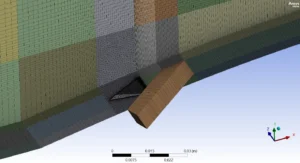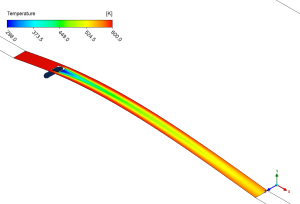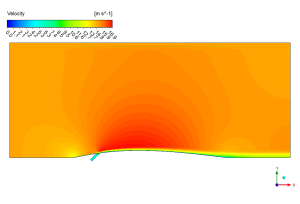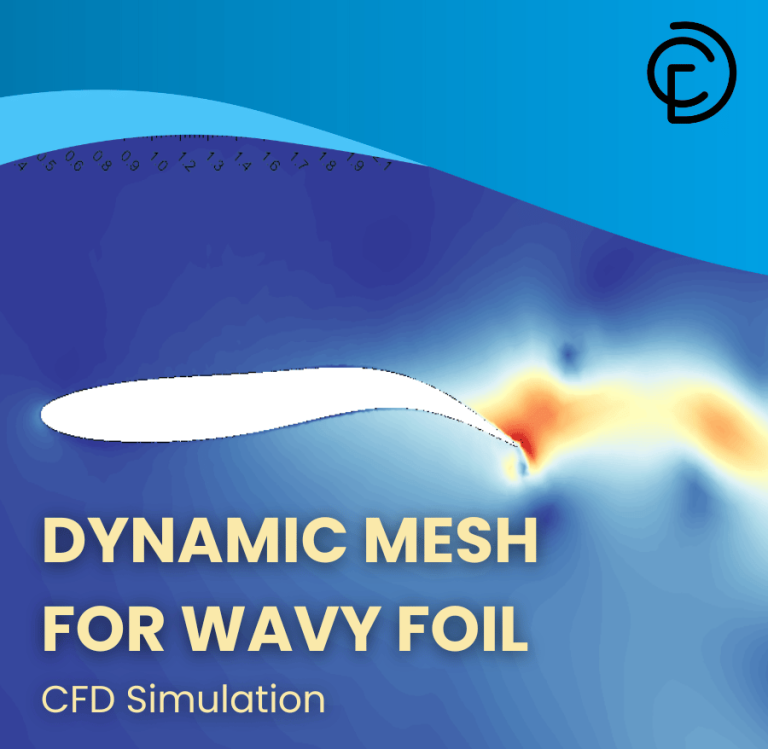Turbine Blade Cooling: A CFD Simulation of Film Cooling Effectiveness
Turbine Blade Cooling: A CFD Simulation of Film Cooling Effectiveness
- Upon ordering this product, you will be provided with a geometry file, a mesh file, and an in-depth Training Video that offers a step-by-step training on the simulation process.
- For any more inquiries regarding the product, please do not hesitate to reach out to us at info@CFDLAND.com or through our online support assistant.
€155 Original price was: €155.€95Current price is: €95.
Film cooling is a smart technique used to protect gas turbine blades from very hot gases. It works by pushing cool air through tiny holes on the blade’s surface. This creates a thin, cool layer of air that acts like a protective shield, stopping the hot metal from melting. In modern jet engines and power plants, running at very high temperatures makes them more powerful and efficient. This technology is so good that it lets engines run with gas that is more than 500°C hotter than the blade’s melting point. This Film Cooling On Blade CFD study uses computer simulation to see exactly how this protective film works, based on an experimental study [1].
- Reference [1]: Zheng, Kuan, et al. “An experimental study on the improvements in the film cooling performance by an upstream micro-vortex generator.” Experimental Thermal and Fluid Science127 (2021): 110410.
Simulation Process: Fluent Setup, Meshing the Blade and Defining Thermal Conditions
For our Film Cooling On Blade Fluent simulation, we modeled a section of the blade where the cooling is applied. We created a very neat, structured grid using 146,673 cells to get an accurate answer. This high-quality mesh helps us see the small details of the flow very clearly. We then set up the problem in the ANSYS Fluent solver. We defined the main flow of hot gas at a very high temperature of 600K. Through a small hole on the blade surface, we injected a stream of cool air at a temperature of 300K. This setup allows us to simulate the real conditions inside a working gas turbine.


Figure 1: The structured grid with 146,673 cells used for the Film Cooling CFD analysis.
Post-processing: CFD Analysis, Visualizing Thermal Protection and Flow Interaction
The temperature contour provides a clear visual of the film cooling shield in action. This professional distribution shows the hot gas at 600K (about 327°C) flowing over the blade. Without protection, the entire blade would reach this dangerous temperature. However, thanks to the injected cool air at 300K (about 27°C), a protective layer forms on the surface. We can see that large parts of the blade stay much cooler, with a significant temperature reduction of 55 degrees. This cool film sticks to the surface and acts as a barrier, which is exactly what engineers want for an effective cooling design.

Figure 2: Temperature distribution from the Film Cooling On Blade CFD simulation, showing the protective cool layer.
The velocity contour explains how the cool air manages to stay attached to the blade. The hot gas moves very fast over the blade, at speeds up to 1.6 m/s. But right where the cooling jet comes out, a special flow pattern is created. The cooling jet pushes against the main flow, creating a cushion that helps the cool air stick to the surface instead of being blown away immediately. This interaction creates small swirls that help spread the cooling effect over a wider area. The most important achievement of this simulation is the successful prediction of the cooling film’s attachment to the blade surface, which validates the model’s ability to analyze and optimize cooling effectiveness for designing more durable and efficient gas turbine engines.

Figure 3: Velocity field from the Film Cooling Fluent analysis, showing the interaction between the cooling jet and the main hot gas flow.
We pride ourselves on presenting unique products at CFDLAND. We stand out for our scientific rigor and validity. Our products are not based on guesswork or theoretical assumptions like many others. Instead, most of our products are validated using experimental or numerical data from valued scientific journals. Even if direct validation isn’t possible, we build our models and assumptions on the latest research, typically using reference articles to approximate reality.
Yes, we’ll be here . If you have trouble loading files, having technical problems, or have any questions about how to use our products, our technical support team is here to help.
You can load geometry and mesh files, as well as case and data files, using any version of ANSYS Fluent.
€195 Original price was: €195.€155Current price is: €155.

€215 Original price was: €215.€165Current price is: €165.

€195 Original price was: €195.€165Current price is: €165.

€235 Original price was: €235.€155Current price is: €155.

€130 Original price was: €130.€85Current price is: €85.

€180 Original price was: €180.€135Current price is: €135.




















Reviews
There are no reviews yet.